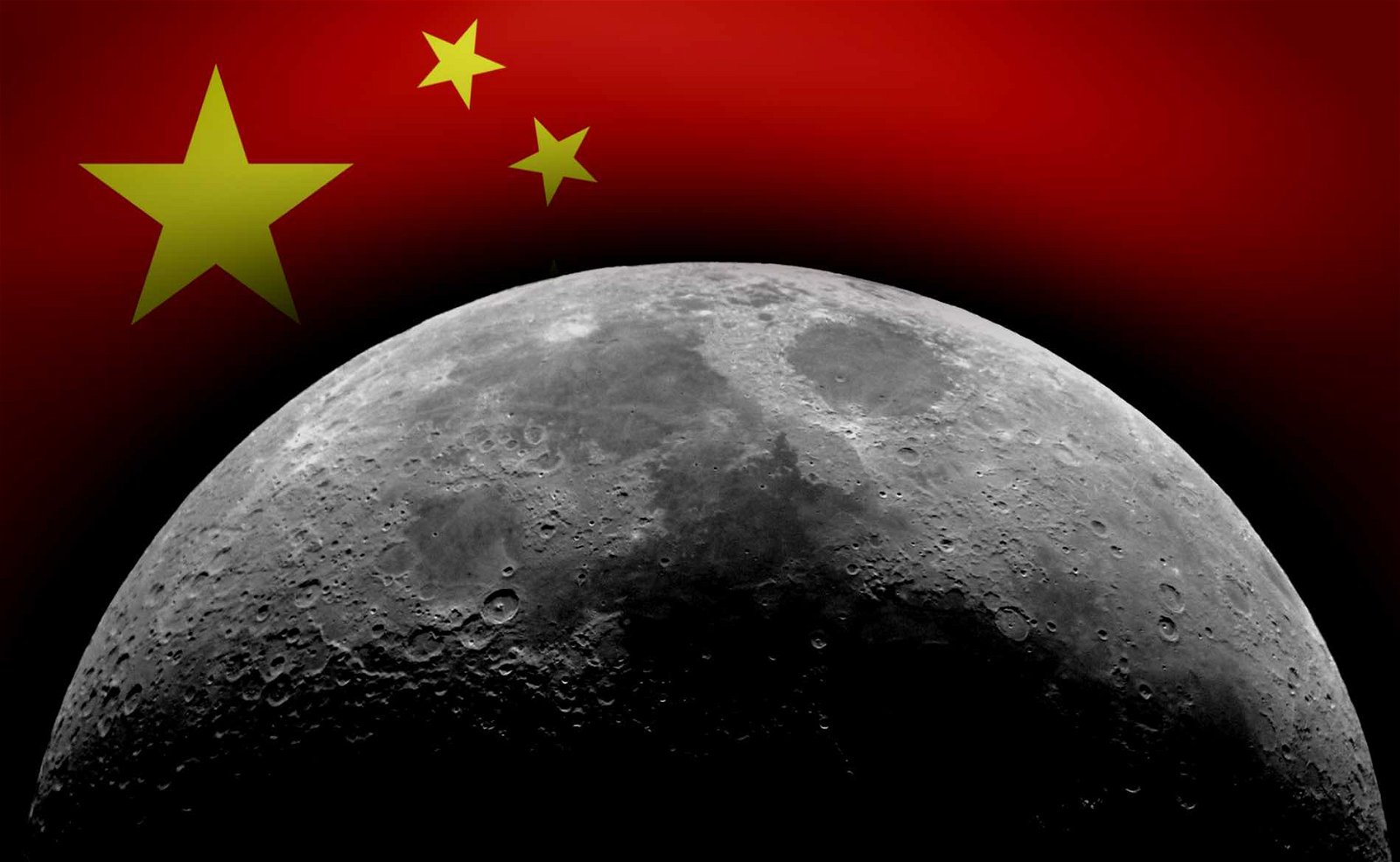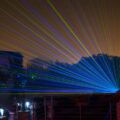With the world’s largest mass surveillance network already under its belt, China is now looking to establish its omnipresence off-world, with plans to extend its sophisticated “Skynet” spy network to the Moon.
The China National Space Administration (CNSA), China’s equivalent to America’s NASA, in collaboration with the Chinese Academy of Sciences and the China Aerospace Science and Technology Corporation, recently disclosed their intentions to build a massive lunar surveillance network in the Chinese journal Acta Optica Sinica.
According to Chinese media, the People’s Republic of China (PRC) aims to secure its planned lunar base with an omnipresent optical surveillance system, drawing directly from the extensive experience and technical prowess honed through Skynet, also known as Tianwang.
“The construction and operation of the optical surveillance system for the (International) Lunar Research Station can draw on the successful experience … of China’s Skynet project,” CNSA said in its report.
Paradoxically named for the highly advanced artificial intelligence (AI) system that becomes self-aware and tries to exterminate humanity through an army of robots and machines in the Terminator movie franchise, “Skynet” refers to an interconnected facial recognition system operated by the Chinese government.
The Chinese Communist Party’s (CCP) flagship newspaper, the Global Times, reports Skynet’s facial recognition software has a 99.8% accuracy rate and can scan the entire population of China, 1.4 billion people, in under a second. However, these claims cannot be independently verified.
According to the PRC, the name “Skynet” originates from an ancient Chinese proverb describing the omnipresence of justice and not from the fictional AI killing machine. “There is forever a net in the sky, with [a] large mesh but letting nothing through,” the proverb reads.
And in fairness, the U.S. National Security Agency (NSA) also has its own “SKYNET,” a classified program that uses machine learning to extract information on possible terror suspects using GSM cellular data.
However, the term “Skynet” is often colloquially used to describe the smothering system of mass surveillance used by the Chinese government to monitor its citizens.
Statistics vary based on the source, but China is believed to operate a network of 200 million to 600 million video surveillance cameras to monitor virtually every inch of the country. Amounting to roughly one camera per adult citizen, many artificial intelligence-driven (AI) programs, like “Skynet” are also integrated into China’s mass security network, affording the PRC even greater control over every aspect of Chinese life.
One such AI program, “Smart Cities,” collects, monitors, and evaluates data on nearly all facets of urban living, such as air quality, traffic patterns, and waste disposal.
The Chinese Ministry of Public Security has also integrated the country’s extensive video surveillance into an AI-driven system dubbed “Police Cloud.”
According to the international Human Rights Watch organization, “Police Cloud” aggregates massive amounts of data on Chinese citizens, such as their comings-and-goings, medical records, internet activity, or religious affiliations to “track and predict the activities of activists, dissidents, and ethnic minorities,” or individuals harboring “extreme thoughts.”
Based on comments by CNSA, the proposed lunar surveillance network would function more like the informally described all-encompassing “Skynet,” as opposed to formally named facial recognition software.
According to the CNSA report, Skynet’s lunar counterpart would include hundreds, potentially thousands, of sophisticated security cameras. Each camera, weighing only 3.5 ounces, would be equipped with AI-driven software “capable of identifying, locating, tracking and aiming at suspicious targets independently.”
If “abnormalities” were detected, the surveillance network would “promptly generate alarm signals and initiate appropriate response measures.”
CNSA did not detail what type of “abnormalities” it might expect to encounter on the Moon, nor did it elaborate on what types of “appropriate responses” the system would perform.
The lunar surveillance network would reportedly function in visible and infrared spectrums, with a network of autonomous systems that could self-organize upon deployment on the Moon’s surface. The ultimate goal would be to create comprehensive surveillance coverage across its future permanent lunar base.
In 2021, Russia and China have announced plans to collaborate on building a permanent “International Lunar Research Station” on the Moon. Last year, Venezuela, South Africa, Azerbaijan, Pakistan, Belarus, and Egypt formally joined the effort.
Current plans for the join off-world settlement involve a nearly 14-square-mile lunar base, including underground facilities, a command and communication center, a power station, laboratories, and a fleet of autonomous robots.
The director of China’s National Space Administration, Zhang Kejian, previously said it expects to begin establishing permanent Moon facilities by 2030.
In a competing joint international endeavor, America’s NASA, the European Space Agency, the Japan Aerospace Exploration Agency, and the Canadian Space Agency are likewise currently undertaking efforts to establish a permanent research facility on the Moon.
While not mentioned in CNSA’s recent report, underlying motivations for China wanting to extend its mass surveillance capabilities to the Moon almost assuredly stem from the current “Space Race” or “Cosmic Cold War” between the United States and China.
On several occasions, NASA Administrator Bill Nelson expressed grave concerns about China attempting to seize portions of the Moon as its sovereign territory.
In a July 2022 interview with the German newspaper Bild, Nelson said, “We must be very concerned that China is landing on the Moon and saying: ‘It’s ours now, and you stay out.'” Beijing denounced Nelson’s comments, saying his warnings of a Chinese moon takeover were a “lie.”
“This is not the first time for the chief of NASA to lie through his teeth and smear China,” said China’s Ministry of Foreign Affairs spokesman Zhao Lijian.
Nevertheless, early last year, Nelson doubled down on his warnings of Chinese lunar intentions.
“It is a fact: we’re in a space race,” Nelson said in an interview with Politico’s Bryan Bender. “And it is true that we better watch out that they don’t get to a place on the Moon under the guise of scientific research. And it is not beyond the realm of possibility that they say, ‘Keep out, we’re here, this is our territory.'”
“If you doubt that, look at what they did with the Spratly Islands,” added Nelson, a former Florida senator and NASA astronaut.
China again rejected Nelson’s remarks, saying, “Outer space is not a wrestling ground.”
“Some U.S. officials have spoken irresponsibly to misrepresent the normal and legitimate space endeavors of China,” said Liu Pengyu, spokesperson for the Chinese Embassy in Washington. “The exploration and peaceful uses of outer space is humanity’s common endeavor and should benefit all. China always advocates the peaceful use of outer space, opposes the weaponization of and arms race in outer space, and works actively toward building a community with a shared future for mankind in the space domain.”
Although China has publicly committed to the peaceful exploration of outer space, its intention to expand its mass surveillance and security network to the Moon indicates concerns that space competition with the U.S. and its allies might escalate into less benign activities.
The competition between the U.S. and China to establish the first permanent base on the Moon centers on the scarcity of resource-rich landing sites on the lunar surface.
Despite its vast expanse of nearly 9 billion surface acres, the Moon’s south pole is the only region believed to contain two vital resources for a lunar outpost’s long-term sustainability and survivability: sunlight and water.
China and the U.S. are currently eyeing regions around the Moon’s south pole as strategic locations for their respective bases.
When discussing the need for a robust surveillance network on the Moon, CNSA noted that its lunar Skynet must be “fortified against external threats,” suggesting China is concerned about state-sponsored sabotage or potential conflict over scarce lunar resources.
“Ensuring confidential communication between the various optical detection terminals and the central control hub represents a significant engineering hurdle,” CNSA authors wrote. “The encryption techniques employed for signal transmission and streaming media must be resilient against the interference caused by the intense electromagnetic radiation prevalent in deep space. The data must not be damaged or stolen.”
Last year, when asked whether the United States would beat China in securing critical lunar landing sites, NASA Administrator Bill Nelson replied, “The good Lord willing.”
However, judging by the recent report from the CNSA, China is taking the lead in setting up what could be humanity’s first surveillance state beyond Earth.
Tim McMillan is a retired law enforcement executive, investigative reporter and co-founder of The Debrief. His writing typically focuses on defense, national security, the Intelligence Community and topics related to psychology. You can follow Tim on Twitter: @LtTimMcMillan. Tim can be reached by email: tim@thedebrief.org or through encrypted email: LtTimMcMillan@protonmail.com

